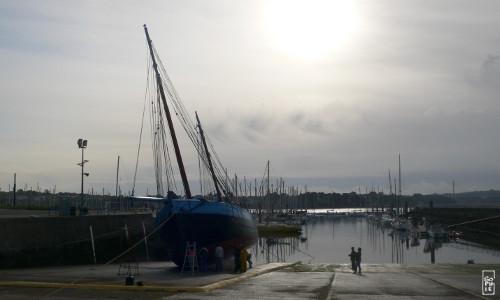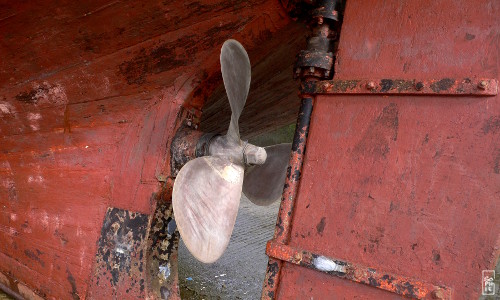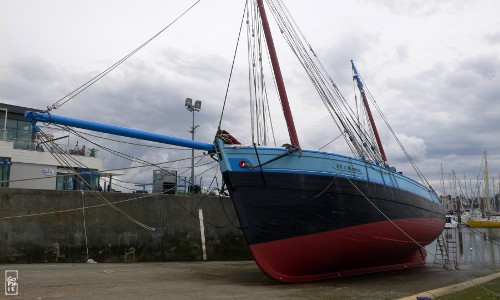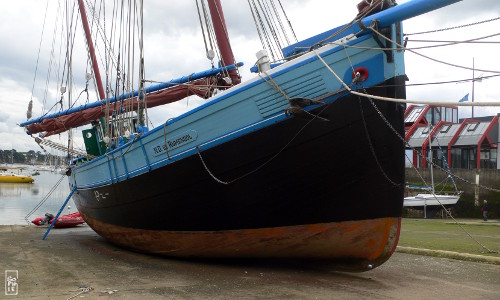Notre-Dame de Rumengol careening (day 1)
Carénage du Notre-Dame de Rumengol (jour 1)

Careening starts as soon as the tide goes out behind the bow of the boat. Notre-Dame de Rumengol has been positioned on one side, we can work on the lowest part of the hull one one side, and on the upper part on the other side.
The boat doesn’t even need to rest on a stand as she has a very flat hull. Two carvel planks are thicker where the hull of the boat rests on the slipway. This is a boat really meant for beaching (to load or wait for the tide in rivers).
Le carénage débute dès que la mer se retire derrière la proue du bateau. Notre-Dame de Rumengol a été positionnée d’un côté, on peut travailler sur la partie basse de la coque d’un côté, sur la partie haute de l’autre.
Le bateau n’a même pas besoin d’une béquille puisque son fond est très plat. Deux bordés sont plus épais à l’endroit où le bateau pose sur la cale (bordés d’échouage). C’est vraiment un bateau fait pour l’échouage (pour charger ou attendre la marée dans les rivières).

The brass propeller of the boat doesn’t attract sea life, but the wooden hull certainly does, so we scrub it then paint it.
L’hélice en laiton du bateau n’attire pas la vie marine, mais la coque en bois le fait très clairement, donc nous la grattons pour la peindre ensuite.

At the end of the tide, port side has got a clean red antifouling paint (above), starboard a clean black hull above the waterline (below).
À la fin de la marée, le côté babord a une peinture antifouling rouge propre (ci-dessus), le tribord une coque noire propre au-dessus de la ligne de flottaison (ci-dessous).

Notre-Dame de Rumengol website.
Site de Notre-Dame de Rumengol.
Brest, Finistère, France—05/2012